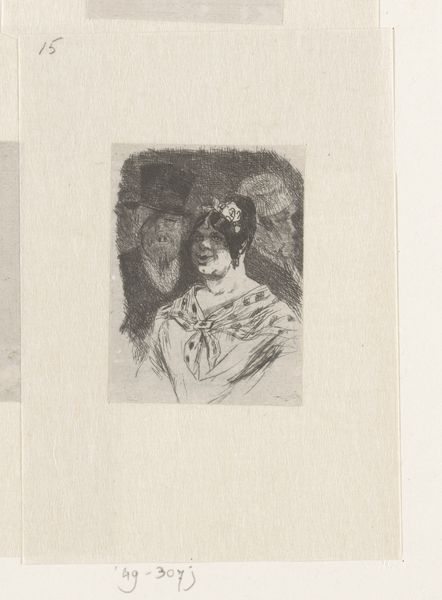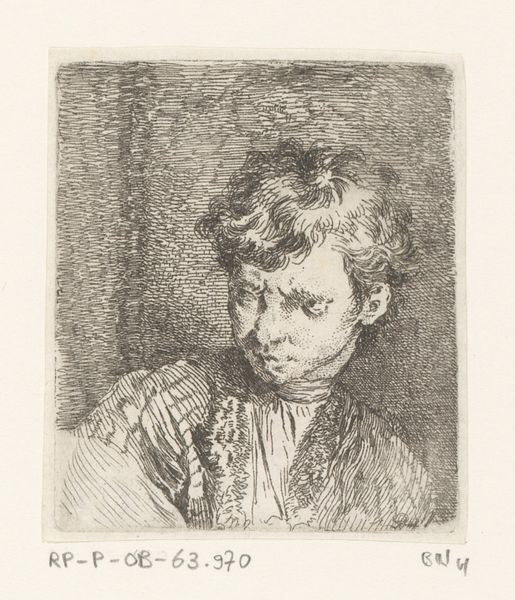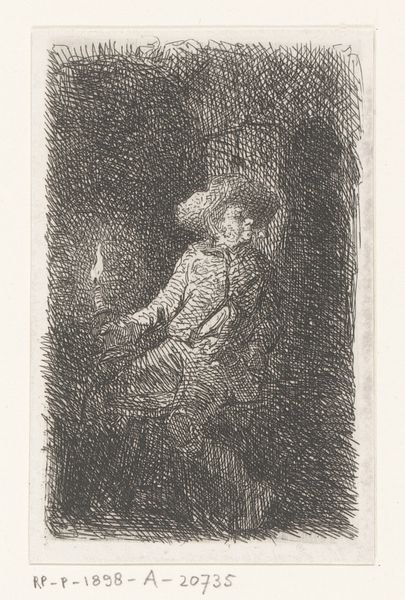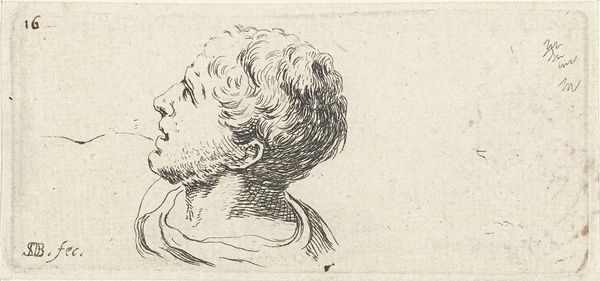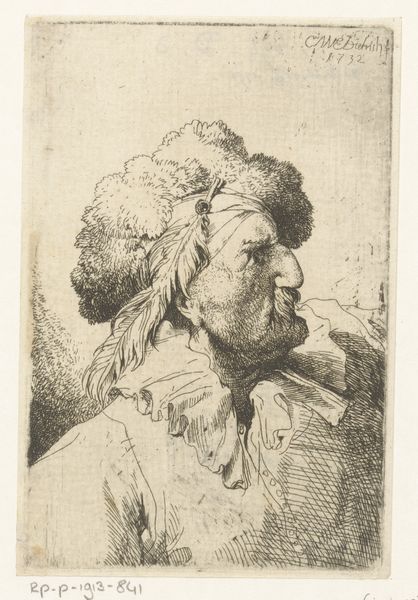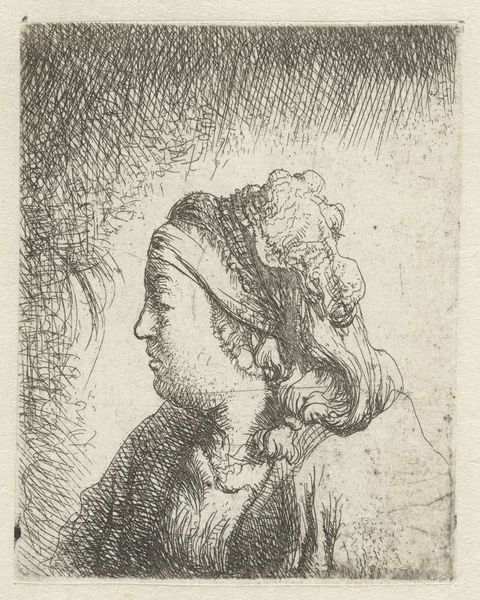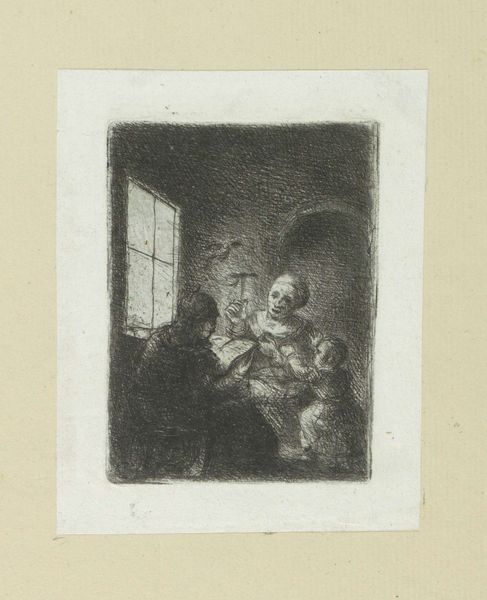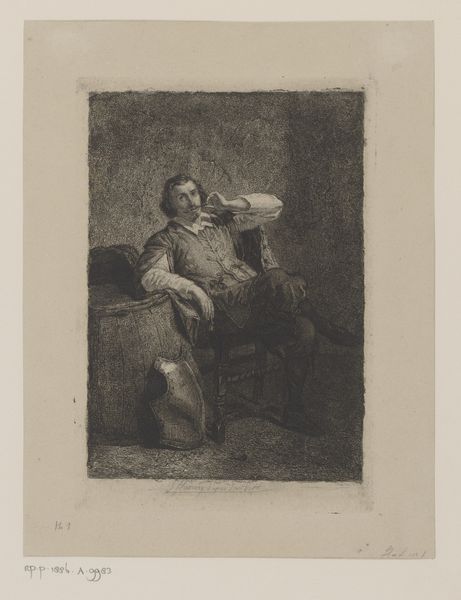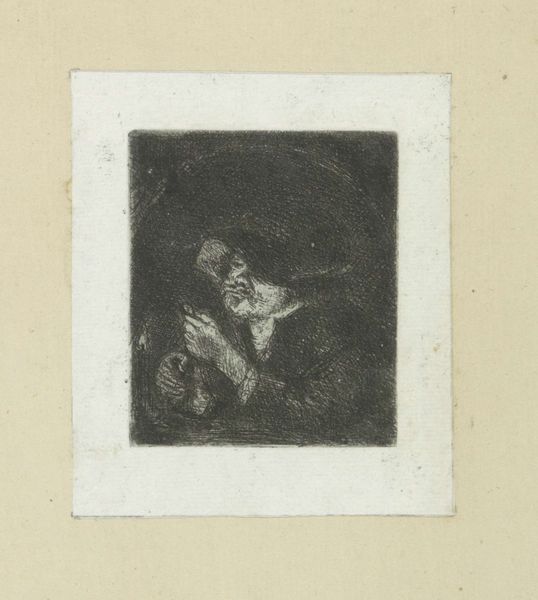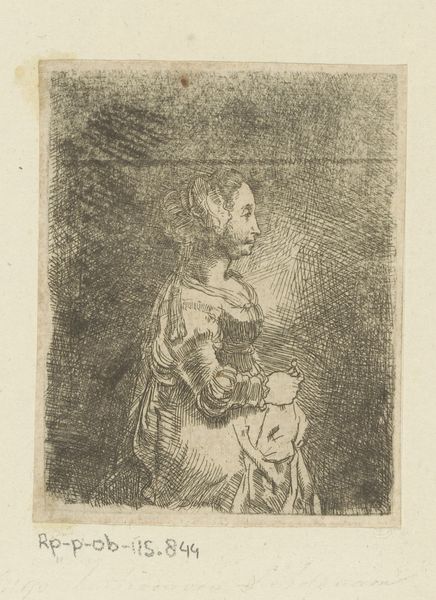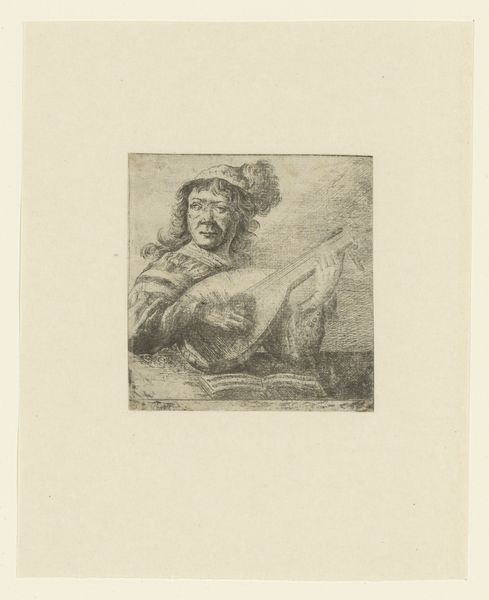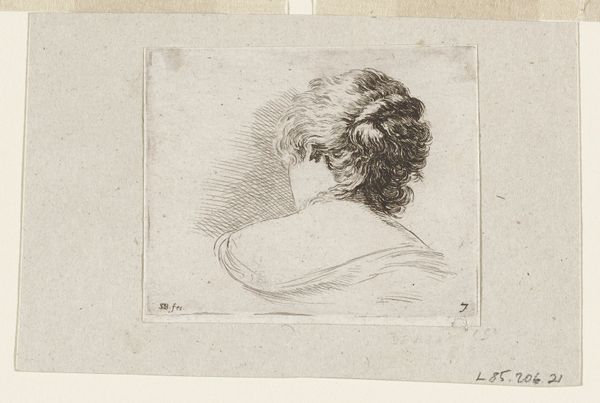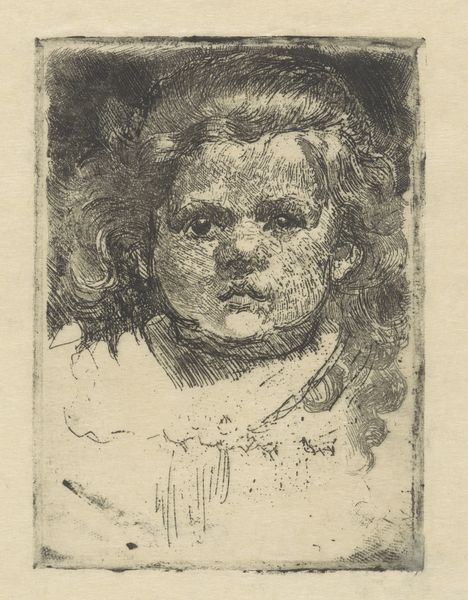
print, etching
#
portrait
#
dutch-golden-age
# print
#
etching
#
figuration
Dimensions: height 38 mm, width 40 mm
Copyright: Rijks Museum: Open Domain
Salomon Koninck created this small etching, titled "Slapend kind" which translates to "Sleeping Child," sometime before his death in 1656. Koninck, working in Amsterdam during the Dutch Golden Age, was part of a society experiencing unprecedented economic and cultural growth. Consider the domesticity of this scene, where childhood is centered. In Dutch art of this period, there's often an emphasis on the virtues of home life, reflecting the values of a rising middle class. But, let’s also think about the accessibility of childhood as a subject for art during this time. Who had the luxury to reflect on such tender moments? Was this a universal experience, or one afforded to a select few? Koninck's soft lines capture a sense of vulnerability and innocence, yet the darkness of the etching hints at the fleeting nature of these moments. It invites us to reflect on our own experiences of childhood, and perhaps, to consider who is granted the space to dream and rest.
Comments
No comments
Be the first to comment and join the conversation on the ultimate creative platform.
